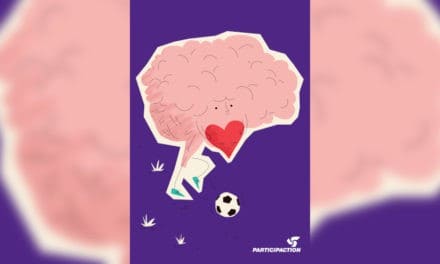A group of HALO researchers including Allana LeBlanc, Dr. Jean-Philippe Chaput, Allison McFarlane, Dr. Rachel Colley, Dr. David Thivel, and Dr. Mark Tremblay along with their colleagues authored a paper, “Active Video Games and Health Indicators in Children and Youth: A Systematic Review,” that was recently published in PLoS One. A summary of the paper and citation details are below. Click here to read the article in full.
Allana G. LeBlanc, Jean-Philippe Chaput, Allison McFarlane, Rachel C. Colley, David Thivel, Stuart J. H. Biddle, Ralph Maddison, Scott T. Leatherdale, Mark S. Tremblay. Active Video Games and Health Indicators in Children and Youth: A Systematic Review. PLoS ONE 8(6): e65351. doi:10.1371/journal.pone.0065351
ABSTRACT: Background. Active video games (AVGs) have gained interest as a way to increase physical activity in children and youth. The effect of AVGs on acute energy expenditure (EE) has previously been reported; however, the influence of AVGs on other health-related lifestyle indicators remains unclear. Objective. This systematic review aimed to explain the relationship between AVGs and nine health and behavioural indicators in the pediatric population (aged 0–17 years). Data sources. Online databases (MEDLINE, EMBASE, psycINFO, SPORTDiscus and Cochrane Central Database) and personal libraries were searched and content experts were consulted for additional material. Data selection. Included articles were required to have a measure of AVG and at least one relevant health or behaviour indicator: EE (both habitual and acute), adherence and appeal (i.e., participation and enjoyment), opportunity cost (both time and financial considerations, and adverse events), adiposity, cardiometabolic health, energy intake, adaptation (effects of continued play), learning and rehabilitation, and video game evolution (i.e., sustainability of AVG technology). Results. 51 unique studies, represented in 52 articles were included in the review. Data were available from 1992 participants, aged 3–17 years, from 8 countries, and published from 2006–2012. Overall, AVGs are associated with acute increases in EE, but effects on habitual physical activity are not clear. Further, AVGs show promise when used for learning and rehabilitation within special populations. Evidence related to other indicators was limited and inconclusive. Conclusions. Controlled studies show that AVGs acutely increase light- to moderate-intensity physical activity; however, the findings about if or how AVG lead to increases in habitual physical activity or decreases in sedentary behaviour are less clear. Although AVGs may elicit some health benefits in special populations, there is not sufficient evidence to recommend AVGs as a means of increasing daily physical activity.




